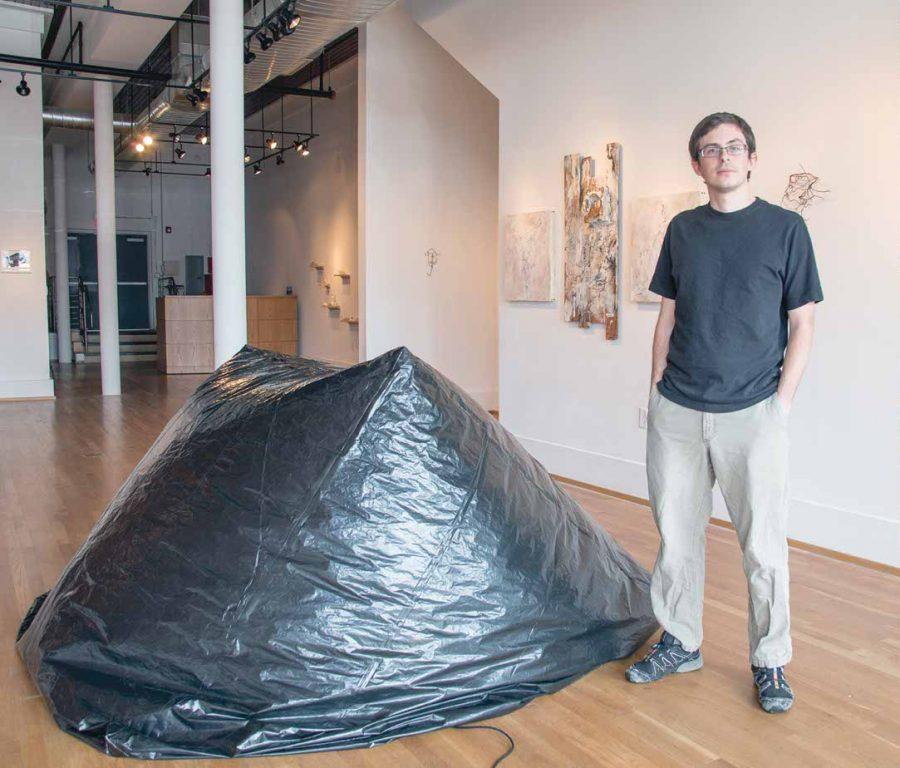Lonnie Holley never entered eighth grade. His neighbors said the art he made was voodoo, so he hid it in his backyard. Holley only played the black keys of the piano until recently. Holley, “the Sandman,” is an internationally acclaimed artist and musician coming to Tuscaloosa to perform Thursday at the Paul R. Jones Gallery.
Holley was born the seventh of 27 children. He grew up doing odd jobs such as digging graves, picking up trash at a drive-in theater and cooking as a short-order chef.
Holley stumbled upon art at the age of 29 when he made tombstones out of sandstone for his sister’s children. He didn’t know he was making art until his friend explained it and told him to take it to the museum. His work was selected for a traveling show with the Smithsonian and is distinguished by his use of discarded materials. More than 30 years later, Holley became a recording artist, set apart by his improvisational style.
“I want people to think of me as an awarer: a person that makes somebody aware of something,” Holley said. “I’m trying to show that humans, from the times that we’ve arrived in a place, have spread and how the material usage that we’re using has become massive. And I’m trying to go through the massive amount of material and show the definition of some of it.”
Holley uses his experiences and observations in his approach to making work. His artistic style has been given labels and categories that Holley said he dismisses.
“The only difference between myself and other artists is that other artists were from other countries. They was born in different time periods and the materials that they worked with were totally different,” Holley said. “People must realize we are American artists. That’s all I want said about me on my grave.”
This Alabama-born artist will be performing Thursday at 7:30 p.m. in the Paul R. Jones gallery, surrounded by pieces of his work and work that UA students created in response to his work. This exhibit, The Whole Mine, is comprised of 17 pieces and will have a reception at 5:30 p.m. before the show.
(See also “New gallery opens downtown“)
Andrew Dewar, the head of the Sonic Frontiers concert series, invited Holley to perform at the University. The series tries to bring a mixture of musicians to campus, and Dewar said Holley represented both a regional and international artist.
“Mr. Holley’s music and art is truly unique; the moment you see and hear it, you enter the incredible, singular world of his making,” Dewar said.
After hearing that Holley was coming to campus, Pete Schulte, assistant professor of art, arranged for his drawing seminar class to travel to Atlanta, Ga. to speak with Holley. He created a project for his students to respond to Holley’s art, incorporating the artist’s thought process into their own.
(See also “Cultural center brings student art downtown“)
“There aren’t filters in Lonnie Holley’s work,” Schulte said. “I think it’s healthy for students to be immersed in the art making process. Students get too involved in the outcome, and it’s healthy to focus on the art making.”
Greg Randall, a senior majoring in studio art, said it was challenging to immerse himself in the immediacy of Holley’s creation process.
“Lonnie Holley has no separation between art and life; there is just art,” Randall said. “Interacting with him, it became apparent that his thought is his art. You could see his hands moving at all times, just making at every movement. I don’t know that I’ve ever met someone with no separation between their life and their art.”
For this exhibit, Randall created a six foot cube out of tarp that inflates and deflates in intervals of 30 minutes using a fan with a timer. He was inspired by the texture and the color of the material and he said it fits the exhibit well, resembling a giant trash bag.
“I want people to be enthralled and confused by what’s happening and how it’s happening,” Randall said. “And by doing so, I want to distort, if only slightly, their perception of reality.”
Astri Snodgrass, a second year graduate student in studio art, took a different approach to the project. Snodgrass created a seven-foot painting and used tape to peel off paint, revealing the canvas. She said it looks like one side rises and the other falls. Snodgrass responded to Holley’s work by using found objects as tools instead of a part of her art.
“I think that when you’re not so concerned about what it’s going to be, you can enjoy it and that’s when interesting things start to happen ,” Snodgrass said. “We’re in art school so we’re trying to build up our technique and our style with a lot of critiquing. With him, there’s less editing and it’s much more about the production.”
Holley looks for materials to use everywhere and said he is excited to perform for the students and to pick up materials from the area.
“Everybody all around us is doing some form of art, but they don’t know it’s art,” Holley said. “Somebody in the kitchen right now is making supper. But they wouldn’t call it culinary art. It’s just mama or grandmama cooking. But for a chef, he calls it a culinary experience. It just determines how we use it.”
(See also “First Friday promotes downtown galleries“)









